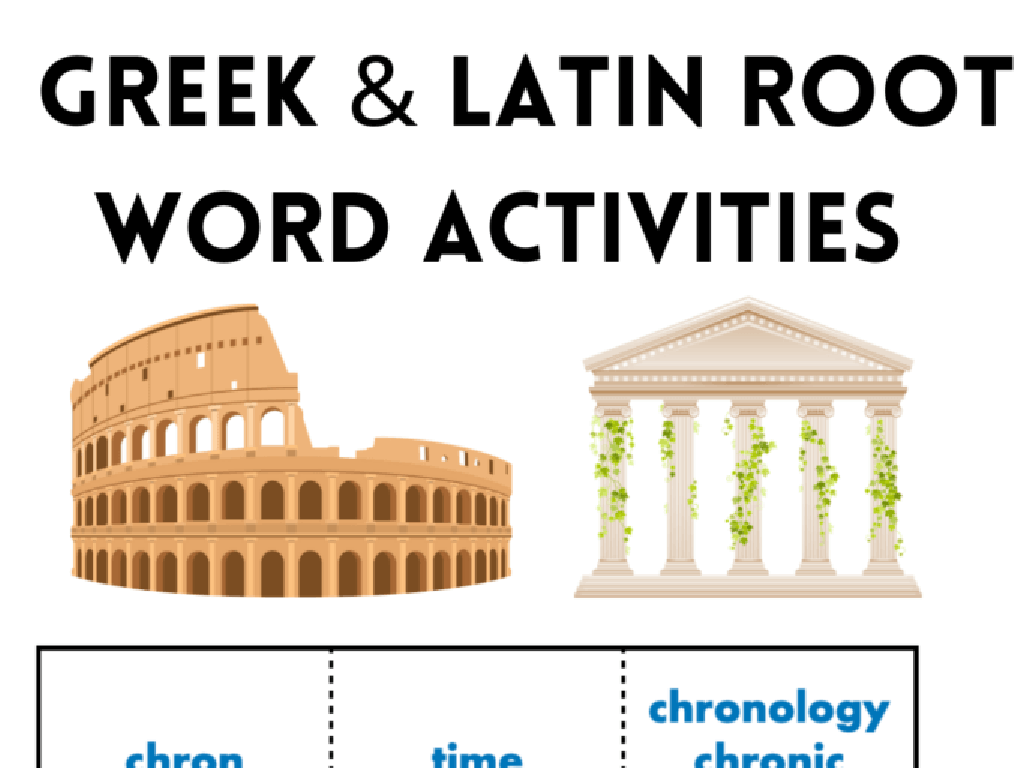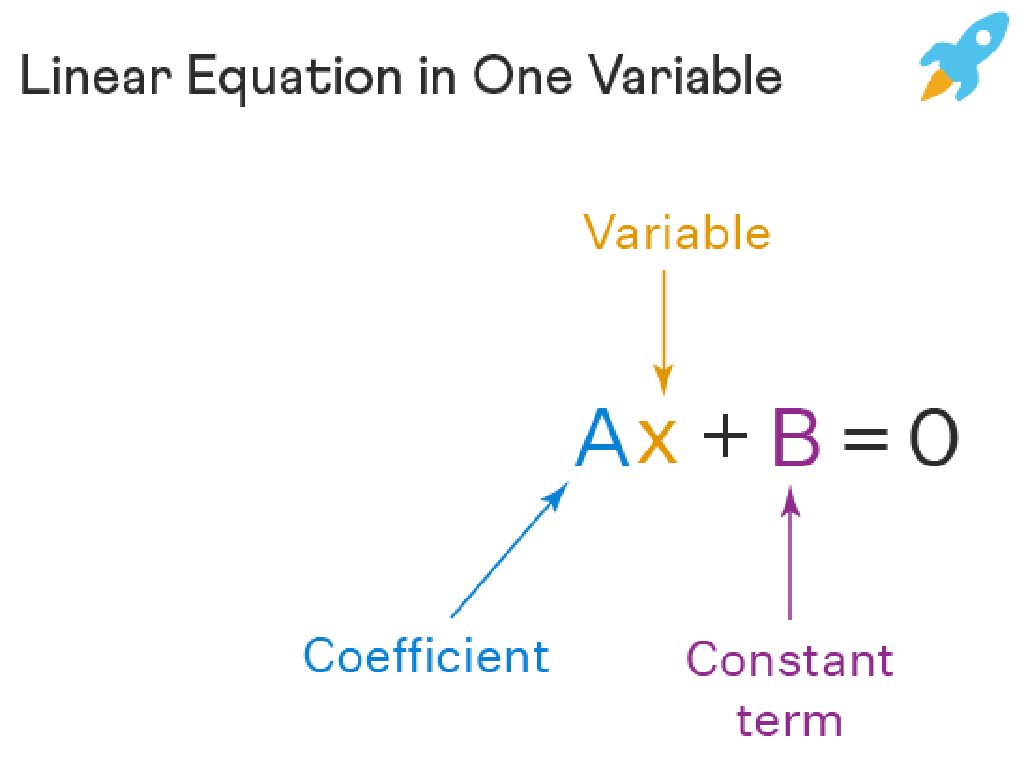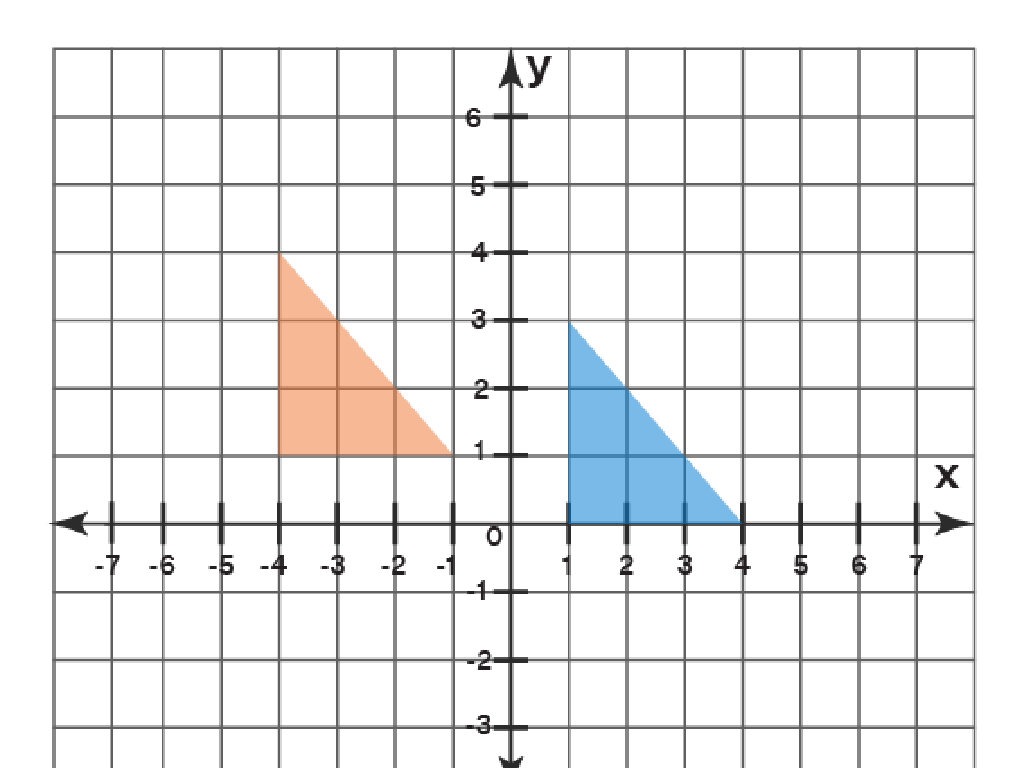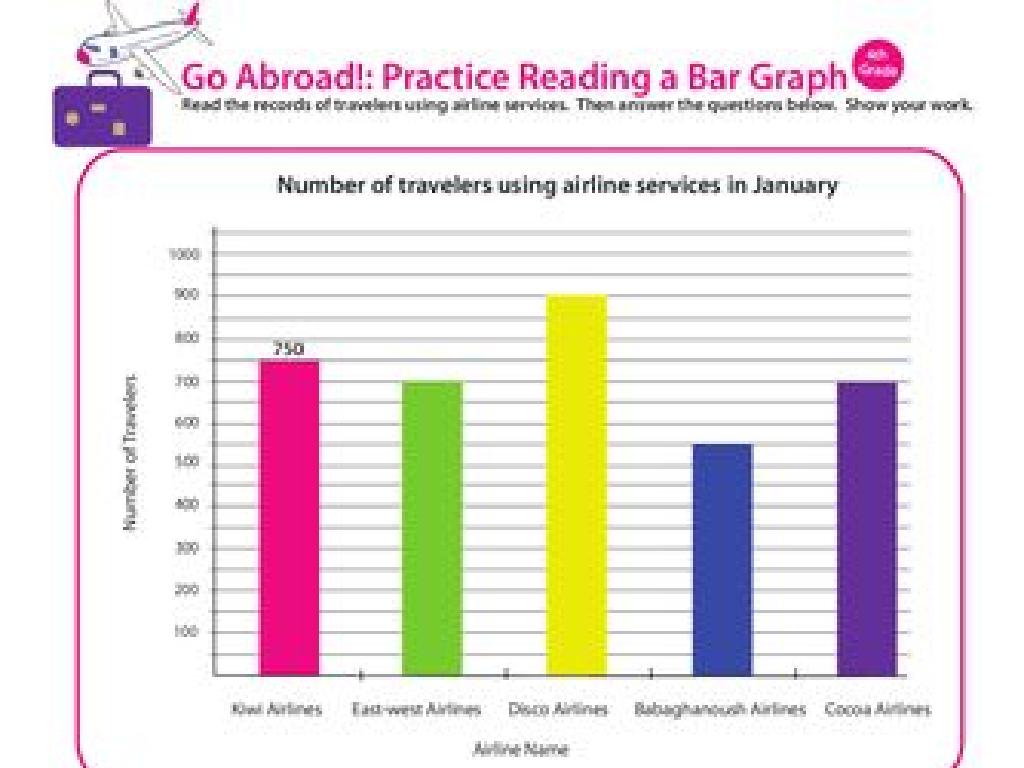Identify Main Verbs And Helping Verbs
Subject: Language arts
Grade: Fifth grade
Topic: Verb Types
Please LOG IN to download the presentation. Access is available to registered users only.
View More Content
Understanding Main Verbs and Helping Verbs
– Define main verbs in sentences
– Main verbs express the main action or state of being.
– Explore helping verbs
– Helping verbs work with main verbs to show time or possibility.
– The role of verbs in sentences
– Verbs are the action words that tell us what’s happening.
– Importance of identifying verbs
– Knowing verbs helps us understand sentence structure.
|
This slide introduces the concept of main verbs and helping verbs to the students. Start by defining a main verb as the word that shows the primary action or state of being in the sentence. Then, explain that helping verbs (also known as auxiliary verbs) are used alongside main verbs to modify their meaning and provide additional detail about the action, such as when it happened or if it’s a possibility. Emphasize the importance of verbs as they are crucial in forming sentences and conveying action or states of being. Understanding and identifying verbs are key skills in grammar that aid in sentence construction and comprehension. Provide examples and encourage students to find verbs in sentences as a class activity.
Understanding Verbs: Action and Being
– Verbs show action or state
– Action verbs: run, jump, eat
– Words that show what someone or something does
– Being verbs: am, is, are
– Words that describe a condition or existence
– Practice identifying verbs
– Find verbs in sentences from your favorite book
|
This slide introduces the concept of verbs to the students, emphasizing the difference between action verbs and verbs that indicate a state of being. Action verbs are easy to spot as they show what someone or something is doing. In contrast, state of being verbs may not be as obvious since they describe a condition or existence, such as ‘is’ or ‘are.’ Encourage students to think of verbs as ‘doing’ or ‘being’ words. To reinforce learning, have students practice by identifying verbs in sentences from books they enjoy reading. This will help them understand how verbs function within the context of a sentence.
Understanding Main Verbs
– Main verbs show action or state
– Example: ‘She writes a letter’
– ‘Writes’ indicates the action of composing a letter
– ‘Writes’ is the main verb
– It tells us what the subject does
– Look for the verb that is central to the sentence’s meaning
|
This slide introduces the concept of main verbs to the students. Main verbs are crucial as they tell us about the primary action or the state of being of the subject in a sentence. For example, in the sentence ‘She writes a letter every day,’ the main verb is ‘writes’ because it describes what ‘she’ (the subject) is doing. It’s important to help students identify the main verb in a sentence as it is key to understanding the sentence’s meaning. Encourage students to find the action or state of being words in sentences and determine which is central to the sentence’s meaning. Provide additional examples and practice sentences for students to work on as a class or in groups.
Exploring Helping Verbs
– Helping verbs enhance main verbs
– List of common helping verbs
has, have, had, will, shall, would, should, can, could, may, might, must, do, does, did
– ‘Has written’: An example
‘Has’ helps show that the action is completed
– Usage shows time or possibility
Helping verbs can indicate future action or potential
|
This slide introduces the concept of helping verbs and their role in enhancing the meaning of main verbs. Helping verbs are used to express tense, mood, and voice. They are essential for constructing different verb tenses. The slide lists common helping verbs that students should memorize, as they are frequently used in English. The example ‘has written’ demonstrates how ‘has’ helps to indicate that the action of writing is completed in the past. It’s important for students to understand that helping verbs are not just additional words; they provide crucial information about the time or possibility of the main verb’s action. Encourage students to create sentences using different helping verbs to familiarize themselves with their usage.
Identifying Main and Helping Verbs
– How to find the main verb
– Ask: ‘What is the subject doing?’
– Locating the helping verb
– Look for verbs before the main verb
– Example sentence breakdown
– ‘She will be visiting her grandparents next week.’
– Practice identifying verbs
|
This slide is aimed at teaching students how to identify main and helping verbs within a sentence. The main verb represents the primary action or state of being, and it can be found by asking what the subject is doing. Helping verbs, which come before the main verb, assist in expressing time, mood, or voice. Use the example sentence to illustrate how ‘visiting’ is the main verb showing the action, while ‘will’ and ‘be’ are helping verbs that modify the main verb. Encourage students to practice by finding the main and helping verbs in sentences from their favorite books or stories.
Practice: Main Verbs and Helping Verbs
– Practice identifying verbs
– Example sentence analysis
‘They are playing soccer in the park.’
– ‘are’ as a helping verb
Helping verb ‘are’ supports the main verb
– ‘playing’ as the main verb
Main verb ‘playing’ shows the action
|
This slide is designed for a practice activity where students will learn to identify main verbs and helping verbs in sentences. Start by explaining that the main verb is the primary action or state of being in the sentence, while the helping verb assists the main verb and helps to form different tenses. Use the example sentence ‘They are playing soccer in the park.’ to illustrate this concept. Break down the sentence to show that ‘are’ is the helping verb that supports the main verb ‘playing,’ which indicates the action taking place. Encourage students to find similar sentences in their reading materials and identify the main and helping verbs. Provide additional examples if needed and facilitate a class discussion to reinforce learning.
Class Activity: Verb Hunt
– Pair up and pick a favorite book
– Find sentences with main and helping verbs
– Look for action words and words like ‘is, are, was, were’
– Underline main verbs, circle helping verbs
– Share your findings with the class
– Discuss how the verbs work together in the sentence
|
This activity is designed to reinforce the concept of main verbs and helping verbs through practical application. Students will work in pairs to encourage collaboration. They should look for sentences that contain both main verbs, which show the action or state of being, and helping verbs, which assist the main verb and can change its tense. Instruct students to use underlining and circling as visual aids to distinguish between the two types of verbs. After the activity, facilitate a class discussion where students can share their sentences and explain their reasoning. This will help them learn from each other and solidify their understanding of verb types. Provide guidance and support as needed during the activity.
Conclusion & Homework: Verbs in Action
– Congrats on learning main & helping verbs!
– Homework: Craft 5 sentences
– Create sentences from your daily life
– Include a main verb and a helping verb
– Example: ‘She is running’ – ‘is’ helps the main verb ‘running’
– Share your sentences next class
|
Well done teaching about main verbs and helping verbs! For homework, students should write five original sentences, each containing both a main verb and a helping verb. This will reinforce their understanding of how helping verbs modify main verbs to create a specific tense or mood. Encourage creativity and the use of verbs from their own experiences. In the next class, provide an opportunity for students to share their sentences, fostering a collaborative learning environment. Offer feedback and celebrate their efforts to apply the lesson to their writing.






